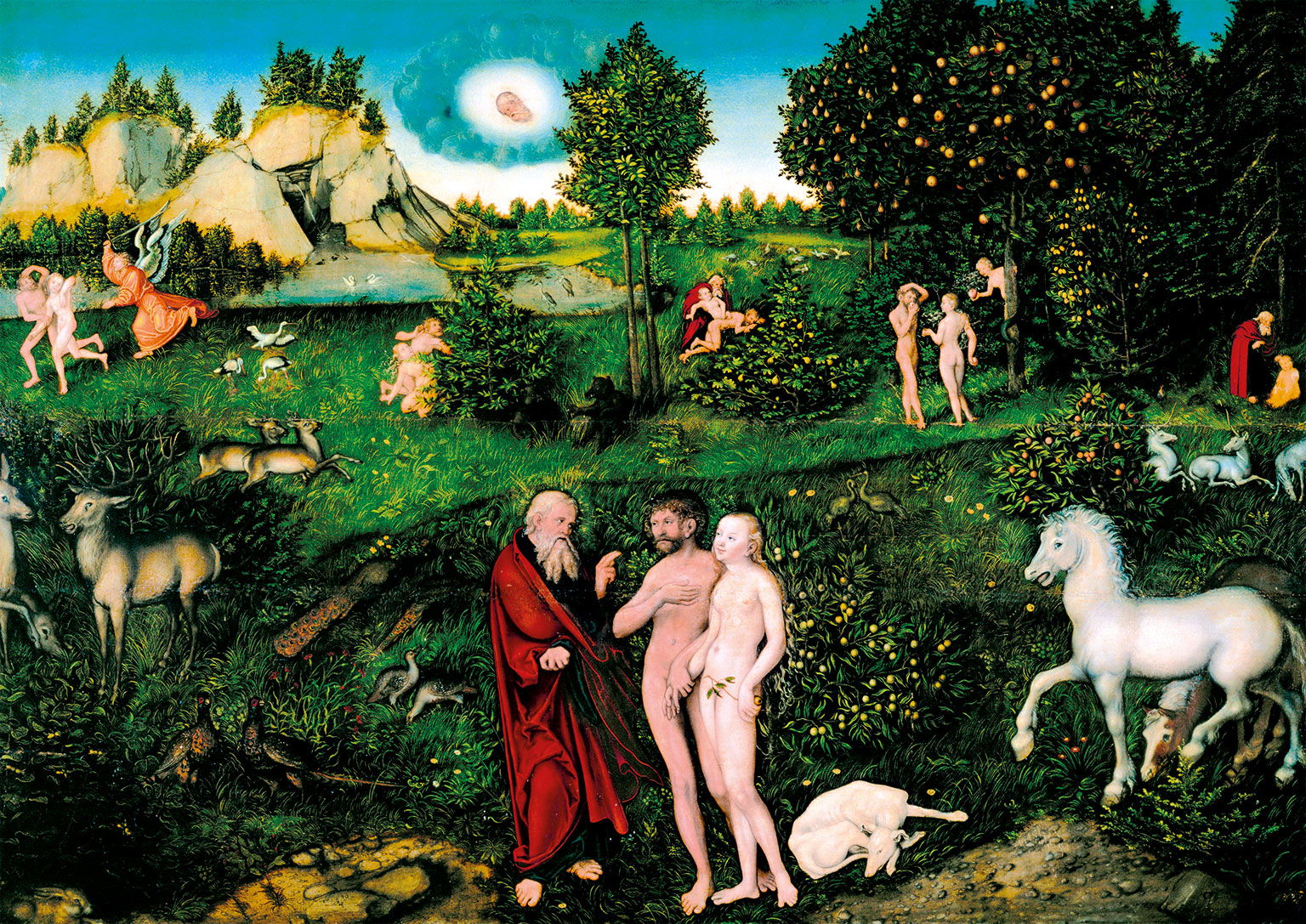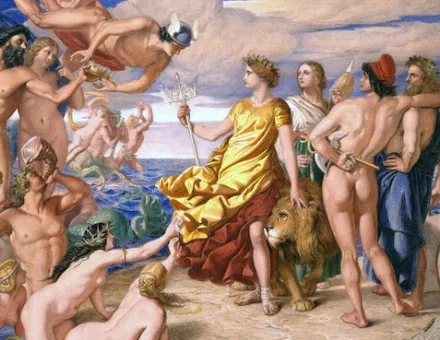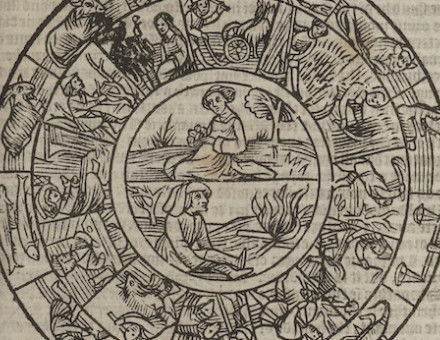
Adam and Eve
The fall of man and the concept of Original Sin.
Adam and Eve, the first man and woman, converse in the foreground with their creator, God. Elsewhere in this cinematic painting by the German Renaissance artist, Lucas Cranach the Elder, we see the key events of their story, which is told in just seven verses of Genesis, the first book of the Bible. In the middle, slightly to the right, God creates Eve from Adam’s spare rib. To the right, Eve is tempted by the forbidden fruit, urged on by the devil – who traditionally adopts the form of a serpent – who claims that they, too, can be gods when they discover good and evil. Despite God’s warnings of its perils as the source of knowledge and shame, they indulge their curiosity. To the left of centre, having, of their own free will, realised the end of their paradisical innocence, they seek to cover their nakedness. Finally, in the far left of the picture, they are chased out of Paradise, their fall complete. Mankind will live forever with the consequences of their actions, justifying the importance of Christian redemption: ‘As in Adam all die, so in Christ all will be made alive.’





